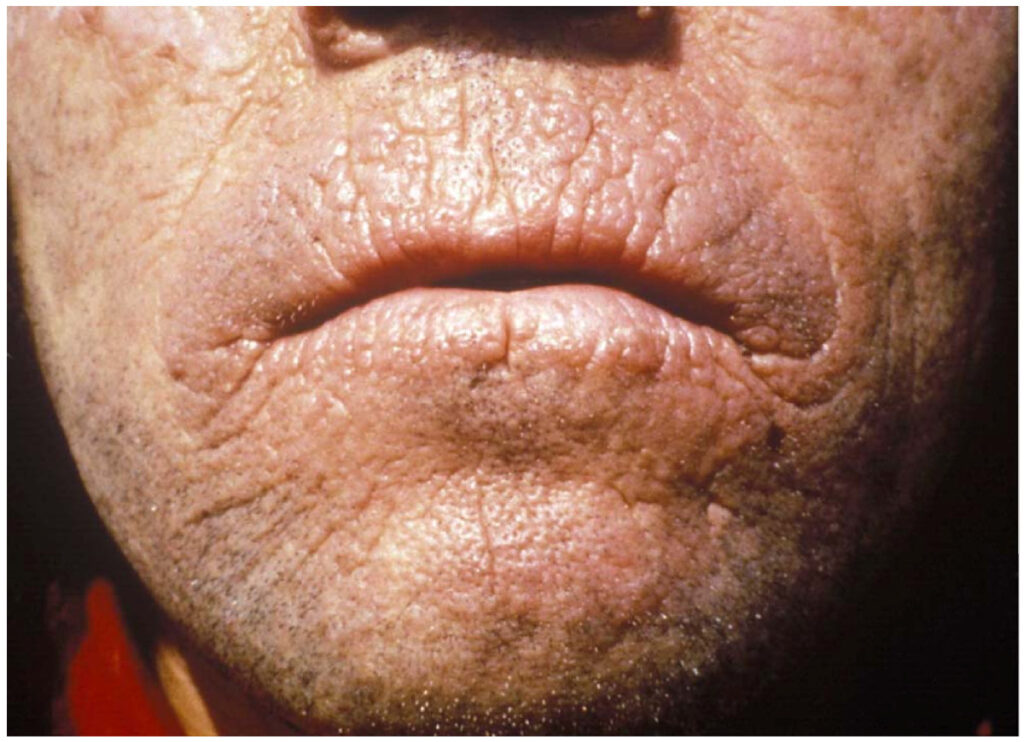Erythropoietic protoporphyria (EPP) is a rare genetic disorder of heme biosynthesis that leads to a buildup of protoporphyrin IX, a compound that can accumulate in the skin, liver, and other tissues. One of the hallmark features of EPP is an extreme sensitivity to sunlight, resulting in painful phototoxic reactions. These reactions typically manifest as intense burning, redness, and blistering of the skin, often following exposure to even minimal sunlight.
While there is no cure for EPP, understanding the mechanisms behind these phototoxic reactions and implementing preventive strategies is crucial for managing symptoms and improving the quality of life for affected individuals.

The Mechanisms Behind Phototoxic Reactions in EPP
How Protoporphyrin Accumulation Leads to Phototoxicity
In individuals with erythropoietic protoporphyria, a deficiency in the enzyme ferrochelatase leads to the accumulation of protoporphyrin IX in red blood cells, plasma, and tissues. When the skin is exposed to light, especially UV radiation, protoporphyrin IX absorbs the light energy and produces highly reactive oxygen species. These reactive species cause oxidative damage to skin cells, resulting in the painful reactions associated with EPP.
Sensitivity to UV Light
Ultraviolet (UV) light, particularly UVA, is a major trigger for phototoxic reactions in EPP patients. The ability of protoporphyrin to absorb light makes these individuals highly sensitive to sunlight, requiring careful management of light exposure.
Key Prevention Strategies for Phototoxic Reactions
1. Avoiding Sunlight Exposure
The most effective way to prevent phototoxic reactions in EPP is to minimize or avoid sunlight exposure, particularly during peak UV hours. Individuals with EPP should be educated on the importance of:
- Staying indoors during the midday hours when UV radiation is strongest (usually between 10 a.m. and 4 p.m.).
- Seeking shade whenever possible when outdoors.
- Wearing protective clothing, including wide-brimmed hats, long-sleeved shirts, and pants, to minimize skin exposure.
By adopting these practices, individuals with EPP can significantly reduce their risk of painful reactions triggered by sunlight.
2. Sun Protection Strategies
Use of Sunscreen
A critical component of sun protection is the use of broad-spectrum sunscreens with a high SPF (at least 50). Sunscreens that protect against both UVA and UVB radiation should be applied liberally to all exposed areas of the skin, even on overcast days, as UV radiation can penetrate through clouds.
- Physical sunscreens containing zinc oxide or titanium dioxide are especially recommended, as they provide a physical barrier against UV radiation.
- Reapplication every two hours, and more frequently if swimming or sweating, is essential for continued protection.
Protective Eyewear
For those with EPP, sunlight sensitivity can extend beyond the skin. Phototoxic reactions can also affect the eyes, causing discomfort and even long-term damage. Wearing UV-blocking sunglasses with 100% UVA and UVB protection is crucial for preventing eye-related phototoxicity.
Pharmacologic Approaches to Managing EPP
1. Beta-Carotene Supplementation
Beta-carotene, a precursor of vitamin A, has been found to help reduce the intensity of phototoxic reactions in some individuals with EPP. Studies suggest that high-dose beta-carotene can provide additional protection against sunlight-induced skin damage by acting as a natural antioxidant.
2. Light Therapy and Photoprotection
Although no definitive light therapy has been universally proven effective for all EPP patients, certain individuals may benefit from controlled exposure to light sources that limit UV damage. Photoprotection treatments, which aim to build up skin tolerance to light, may be explored under medical supervision.
Lifestyle Adjustments and Environmental Modifications
1. Environmental Control at Home and Work
In addition to managing outdoor exposure, individuals with EPP can modify their environments to reduce the impact of light. Some strategies include:
- Installing UV-blocking window film on home and car windows to reduce UV exposure.
- Using light filters or special lamps that block UV rays in workplaces or at home.
2. Wearing Protective Clothing and Materials
In environments with insufficient control over lighting, wearing specialized photoprotective clothing treated with UV-blocking agents can provide an additional layer of defense against phototoxicity. Many companies now offer clothing lines specifically designed for individuals with photosensitive conditions.
Managing Painful Reactions and Long-Term Care
Prompt Treatment of Acute Reactions
Even with preventive measures in place, individuals with EPP may still experience phototoxic reactions. In such cases, early intervention can help minimize discomfort and skin damage.
- Cold compresses can help soothe affected areas and reduce inflammation.
- Topical corticosteroids may be prescribed for inflammation and pain relief.
- Antioxidant creams or gels containing vitamin E can promote healing and reduce skin irritation.
Long-Term Monitoring and Support
Regular follow-up with healthcare providers is essential for monitoring the progression of EPP and adjusting treatment plans as necessary. In particular, liver function should be regularly checked due to the potential for liver damage in individuals with severe forms of the disorder.
The prevention of painful phototoxic reactions in erythropoietic protoporphyria is a multifaceted approach that combines behavioral, pharmacologic, and environmental strategies. By minimizing sun exposure, utilizing appropriate sun protection, and addressing underlying health factors, individuals with EPP can manage their condition more effectively and reduce the risk of painful reactions. With careful planning and support, it is possible to significantly improve the quality of life for those affected by this rare condition.